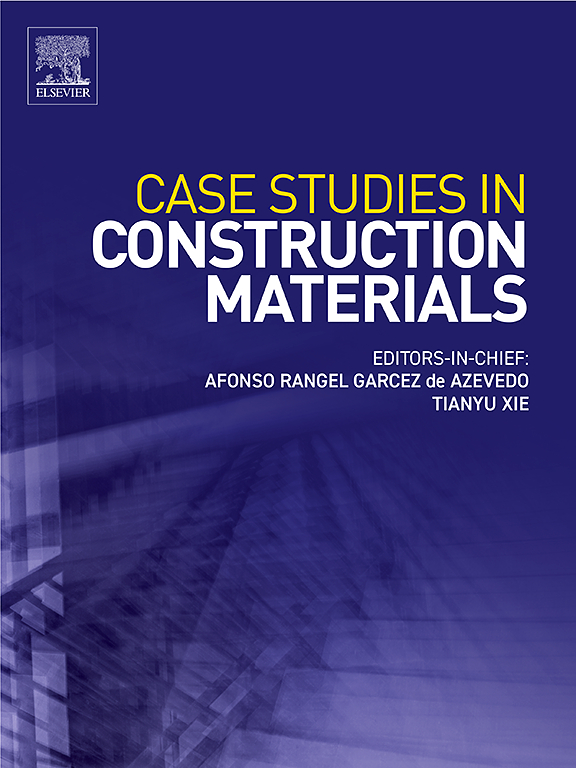Improvement of crack detectivity for concrete surface of subway tunnels with anti-corrosion coatings using deep learning and image processing
IF 6.5
2区 工程技术
Q1 CONSTRUCTION & BUILDING TECHNOLOGY
引用次数: 0
Abstract
The long-term survivability of subway tunnels heavily depends on the durability and stability of concrete structures. Cracks in concrete, caused by factors such as severe loading, environmental influences, and chemical effects etc., lead to a reduction in structural durability and may even result in a loss of stability. In this study, crack detection is achieved through deep learning and image processing. We design a novel crack locally ordered annotation method. Training the object detection model using the proposed annotation method can achieve more accurate crack localization. Subsequently, based on the proposed annotation method, we improve the You Only Look Once version 8 nano (YOLOv8n) model by incorporating Focal Efficient Intersection over Union (FEIoU) and a path aggregation feature pyramid network with dynamic snake convolution (PADFPN), resulting in a YOLOv8n model combined with FEIoU and PADFPN (YOLOv8n-FED). This model effectively integrates multi-scale information of cracks. Finally, we extract the detected crack regions and segment them using a region-growing algorithm. In terms of object detection, based on the proposed annotation method, YOLOv8n-FED, compared with the original model, achieves a detection precision of 95.0 %, an improvement of 3.7 %; and a mean Average Precision (mAP) 50–95 of 80.7 %, a gain of 6.2 %. For semantic segmentation, our method yielded satisfactory results without requiring laborious pixel-level annotations, achieving a precision and F1-score of 75.2 % and 80.9 %, respectively, both outperforming the comparison models. Moreover, it can capture finer crack edge features.
基于深度学习和图像处理的地铁隧道混凝土表面防腐涂层裂缝检测改进
地铁隧道的长期生存能力在很大程度上取决于混凝土结构的耐久性和稳定性。混凝土裂缝是由剧烈荷载、环境影响、化学作用等因素引起的,会导致结构耐久性降低,甚至失去稳定性。在本研究中,裂纹检测是通过深度学习和图像处理实现的。设计了一种新的裂缝局部有序标注方法。利用本文提出的标注方法训练目标检测模型,可以实现更精确的裂纹定位。随后,我们在提出的标注方法的基础上,对You Only Look Once version 8 nano (YOLOv8n)模型进行了改进,将Focal Efficient Intersection over Union (FEIoU)模型和带有动态蛇卷积(PADFPN)的路径聚合特征金字塔网络(path aggregation feature pyramid network)相结合,得到了FEIoU和PADFPN相结合的YOLOv8n模型(YOLOv8n- fed)。该模型有效地集成了裂纹的多尺度信息。最后,提取检测到的裂纹区域,并使用区域增长算法对其进行分割。在目标检测方面,基于所提出的标注方法,YOLOv8n-FED与原始模型相比,检测精度达到95.0 %,提高3.7 %;平均精度(mAP) 50-95为80.7 %,增益6.2 %。对于语义分割,我们的方法在不需要费力的像素级注释的情况下产生了令人满意的结果,分别达到了75.2 %和80.9 %的精度和f1分数,两者都优于比较模型。此外,它可以捕捉到更精细的裂纹边缘特征。
本文章由计算机程序翻译,如有差异,请以英文原文为准。
求助全文
约1分钟内获得全文
求助全文
来源期刊

Case Studies in Construction Materials
Multiple-
CiteScore
7.60
自引率
19.40%
发文量
842
审稿时长
63 days
期刊介绍:
Case Studies in Construction Materials provides a forum for the rapid publication of short, structured Case Studies on construction materials. In addition, the journal also publishes related Short Communications, Full length research article and Comprehensive review papers (by invitation).
The journal will provide an essential compendium of case studies for practicing engineers, designers, researchers and other practitioners who are interested in all aspects construction materials. The journal will publish new and novel case studies, but will also provide a forum for the publication of high quality descriptions of classic construction material problems and solutions.
 求助内容:
求助内容: 应助结果提醒方式:
应助结果提醒方式:


